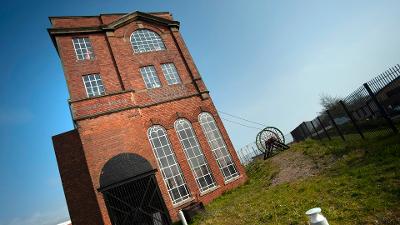Industrial heritage

Coal and salt
Coal mining was the first large-scale non-agricultural industry to arrive and by 1794 a colliery was in operation in Hebburn.
Coal mining remained in this area, where Sir Humphrey Davy tested his safety lamp, until the closure of the last pit in 1993. There were pits at Whitburn, Westoe, St Hilda's, Harton, Boldon and Hebburn.
Limestone has been quarried at Marsden since the early 19th century and Marsden Limekilns were built in the 1870's. Limestone was burnt to make a quick or unslaked lime, which is used to add to cement to make mortar and is also important for the steel and chemicals industry.
In 1870 Harton Coal Company built a railway linking Whitburn Colliery, Marsden Quarry and the Marsden Limekilns to a wider rail network at Westoe Colliery.
Between 1885 and 1953 the railway operated a passenger service up and down the coast. The rolling stock was always fairly old which earned it the nickname "The Marsden Rattler".
For over 200 years coal was also used in the process of making salt. In 1768 South Shields had more than 200 salt pans making it the most important salt making town in Britain.
Shipbuilding
Shipbuilding was a major influence in both the social and economic development of South Tyneside.
Readheads Shipyard was a great source of job creation for shipyard workers and most families in the area had members employed there at one time or another. While in business the shipyard built over 600 ships, mainly mercantile marine.
The North and South Piers were laid in 1854 and Tyne Dock was opened in 1859 with the capacity to hold 500 vessels.
South Shields Museum and Art Gallery
This free museum at the heart of South Shields Town Centre is the place to go to find out all about our rich heritage. Find out more about South Shields Museum.